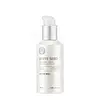What's inside
What's inside
 Key Ingredients
Key Ingredients

 Benefits
Benefits

 Concerns
Concerns

 Ingredients Side-by-side
Ingredients Side-by-side

Butyl Methoxydibenzoylmethane 3%
UV AbsorberHomosalate 10%
Skin ConditioningEthylhexyl Salicylate 5%
UV AbsorberOctocrylene 10%
UV AbsorberWater
Skin ConditioningStyrene/Acrylates Copolymer
Silica
AbrasiveDimethicone
EmollientPotassium Cetyl Phosphate
EmulsifyingBenzyl Alcohol
PerfumingBeeswax
Emulsion StabilisingCaprylyl Methicone
Skin ConditioningGlyceryl Stearate
EmollientPEG-100 Stearate
Cetyl Dimethicone
EmollientCaprylyl Glycol
EmollientEthylhexylglycerin
Skin ConditioningAluminum Starch Octenylsuccinate
AbsorbentBehenyl Alcohol
EmollientAcrylates/Dimethicone Copolymer
Skin ConditioningXanthan Gum
EmulsifyingSodium Polyacrylate
AbsorbentChlorphenesin
AntimicrobialDimethicone/PEG-10/15 Crosspolymer
Hydrolyzed Jojoba Esters
Skin ConditioningParfum
MaskingDisodium EDTA
Ethylhexyl Stearate
EmollientTocopheryl Acetate
AntioxidantBHT
AntioxidantTrideceth-6
EmulsifyingJojoba Esters
EmollientButyl Methoxydibenzoylmethane 3%, Homosalate 10%, Ethylhexyl Salicylate 5%, Octocrylene 10%, Water, Styrene/Acrylates Copolymer, Silica, Dimethicone, Potassium Cetyl Phosphate, Benzyl Alcohol, Beeswax, Caprylyl Methicone, Glyceryl Stearate, PEG-100 Stearate, Cetyl Dimethicone, Caprylyl Glycol, Ethylhexylglycerin, Aluminum Starch Octenylsuccinate, Behenyl Alcohol, Acrylates/Dimethicone Copolymer, Xanthan Gum, Sodium Polyacrylate, Chlorphenesin, Dimethicone/PEG-10/15 Crosspolymer, Hydrolyzed Jojoba Esters, Parfum, Disodium EDTA, Ethylhexyl Stearate, Tocopheryl Acetate, BHT, Trideceth-6, Jojoba Esters
Water
Skin ConditioningPropanediol
SolventPanthenol
Skin ConditioningDimethicone
EmollientEthylhexyl Palmitate
EmollientNiacinamide
Smoothing1,2-Hexanediol
Skin ConditioningCaprylic/Capric Triglyceride
MaskingCyclopentasiloxane
EmollientTriceteareth-4 Phosphate
EmulsifyingCaprylic/Capric Glycerides
EmollientGlycol Stearate
EmollientPEG-2 Stearate
EmulsifyingHydroxyethyl Acrylate/Sodium Acryloyldimethyl Taurate Copolymer
Emulsion StabilisingPolysilicone-11
Polymethylsilsesquioxane
Squalane
EmollientBellis Perennis Flower Extract
Skin ConditioningLupinus Albus Seed Extract
Skin ConditioningPolysorbate 60
EmulsifyingMyristica Fragrans Extract
MaskingSodium Hyaluronate
HumectantButylene Glycol
HumectantHexylresorcinol
AntimicrobialChenopodium Quinoa Seed Extract
Skin ConditioningSalix Alba Bark Extract
AstringentAcrylates/C10-30 Alkyl Acrylate Crosspolymer
Emulsion StabilisingPotassium Hydroxide
BufferingDisodium EDTA
Phenoxyethanol
PreservativeEthylhexylglycerin
Skin ConditioningParfum
MaskingWater, Propanediol, Panthenol, Dimethicone, Ethylhexyl Palmitate, Niacinamide, 1,2-Hexanediol, Caprylic/Capric Triglyceride, Cyclopentasiloxane, Triceteareth-4 Phosphate, Caprylic/Capric Glycerides, Glycol Stearate, PEG-2 Stearate, Hydroxyethyl Acrylate/Sodium Acryloyldimethyl Taurate Copolymer, Polysilicone-11, Polymethylsilsesquioxane, Squalane, Bellis Perennis Flower Extract, Lupinus Albus Seed Extract, Polysorbate 60, Myristica Fragrans Extract, Sodium Hyaluronate, Butylene Glycol, Hexylresorcinol, Chenopodium Quinoa Seed Extract, Salix Alba Bark Extract, Acrylates/C10-30 Alkyl Acrylate Crosspolymer, Potassium Hydroxide, Disodium EDTA, Phenoxyethanol, Ethylhexylglycerin, Parfum
 Reviews
Reviews

Ingredients Explained
These ingredients are found in both products.
Ingredients higher up in an ingredient list are typically present in a larger amount.
Dimethicone is a type of synthetic silicone created from natural materials such as quartz.
What it does:
Dimethicone comes in different viscosities:
Depending on the viscosity, dimethicone has different properties.
Ingredients lists don't always show which type is used, so we recommend reaching out to the brand if you have questions about the viscosity.
This ingredient is unlikely to cause irritation because it does not get absorbed into skin. However, people with silicone allergies should be careful about using this ingredient.
Note: Dimethicone may contribute to pilling. This is because it is not oil or water soluble, so pilling may occur when layered with products. When mixed with heavy oils in a formula, the outcome is also quite greasy.
Learn more about DimethiconeDisodium EDTA plays a role in making products more stable by aiding other preservatives.
It is a chelating agent, meaning it neutralizes metal ions that may be found in a product.
Disodium EDTA is a salt of edetic acid and is found to be safe in cosmetic ingredients.
Learn more about Disodium EDTAEthylhexylglycerin (we can't pronounce this either) is commonly used as a preservative and skin softener. It is derived from glyceryl.
You might see Ethylhexylglycerin often paired with other preservatives such as phenoxyethanol. Ethylhexylglycerin has been found to increase the effectiveness of these other preservatives.
Parfum is a catch-all term for an ingredient or more that is used to give a scent to products.
Also called "fragrance", this ingredient can be a blend of hundreds of chemicals or plant oils. This means every product with "fragrance" or "parfum" in the ingredients list is a different mixture.
For instance, Habanolide is a proprietary trade name for a specific aroma chemical. When used as a fragrance ingredient in cosmetics, most aroma chemicals fall under the broad labeling category of “FRAGRANCE” or “PARFUM” according to EU and US regulations.
The term 'parfum' or 'fragrance' is not regulated in many countries. In many cases, it is up to the brand to define this term.
For instance, many brands choose to label themselves as "fragrance-free" because they are not using synthetic fragrances. However, their products may still contain ingredients such as essential oils that are considered a fragrance by INCI standards.
One example is Calendula flower extract. Calendula is an essential oil that still imparts a scent or 'fragrance'.
Depending on the blend, the ingredients in the mixture can cause allergies and sensitivities on the skin. Some ingredients that are known EU allergens include linalool and citronellol.
Parfum can also be used to mask or cover an unpleasant scent.
The bottom line is: not all fragrances/parfum/ingredients are created equally. If you are worried about fragrances, we recommend taking a closer look at an ingredient. And of course, we always recommend speaking with a professional.
Learn more about ParfumWater. It's the most common cosmetic ingredient of all. You'll usually see it at the top of ingredient lists, meaning that it makes up the largest part of the product.
So why is it so popular? Water most often acts as a solvent - this means that it helps dissolve other ingredients into the formulation.
You'll also recognize water as that liquid we all need to stay alive. If you see this, drink a glass of water. Stay hydrated!
Learn more about Water